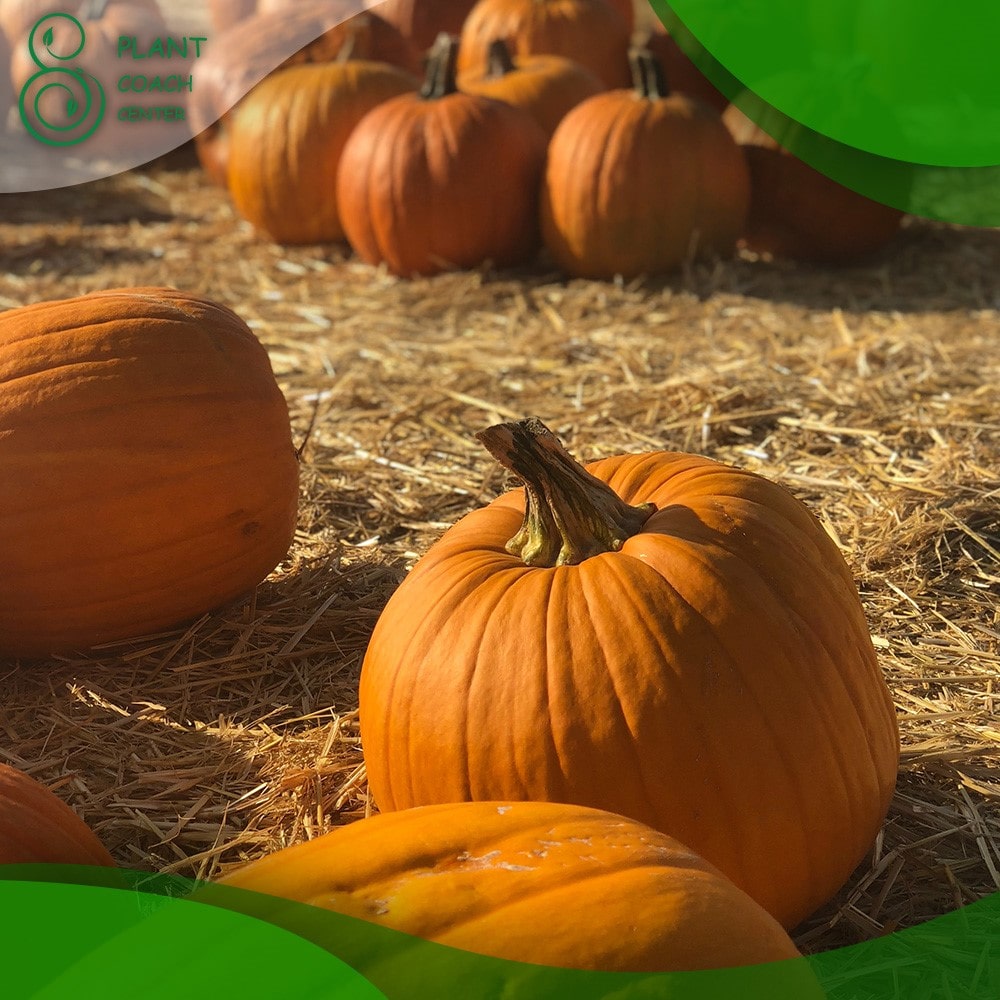When Do You Plant Pumpkins For Halloween?
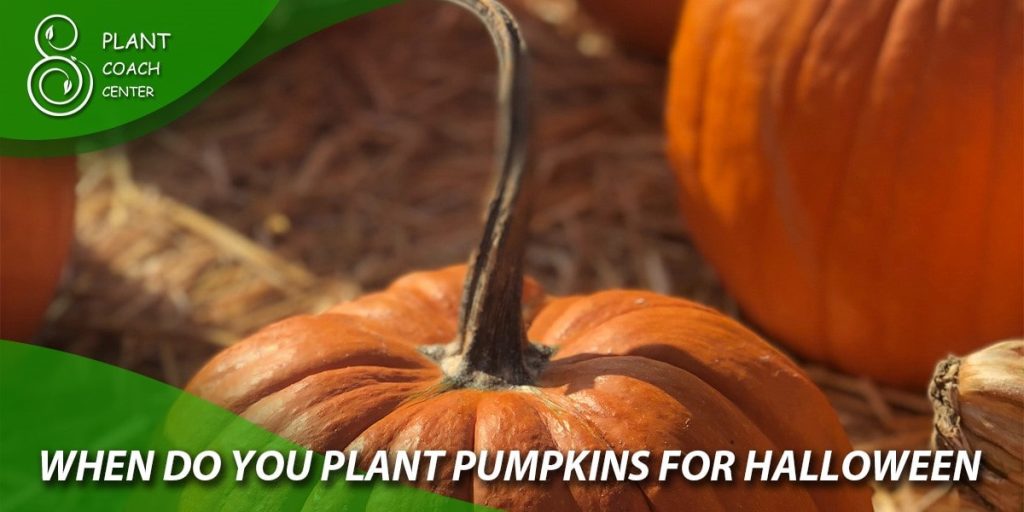
Welcome to the enchanting world of pumpkin cultivation, where the magic of Halloween comes to life in your garden. As autumn’s crisp breeze begins to rustle the leaves, the anticipation for the spooky season takes root, and what better way to celebrate than by growing your own pumpkins?
These vibrant orange symbols of the season hold a special place in our hearts, whether carved into eerie jack-o’-lanterns or transformed into delectable treats. But the journey from seed to Halloween centerpiece requires careful planning and nurturing.
In this guide, we embark on a captivating journey through the art of planting pumpkins for Halloween. From deciphering the ideal planting windows to understanding the phases of pumpkin growth, we delve into the secrets of cultivating thriving pumpkin patches.
Whether you’re a seasoned green thumb or a curious novice, join us as we uncover the tricks and treats of timing, varieties, and techniques to ensure your Halloween celebrations are graced with homegrown pumpkins that embody the season’s spirit.
The Perfect Countdown: Timing Is Everything
In pumpkin cultivation, timing is critical to a bountiful harvest that aligns flawlessly with the Halloween festivities. As the days grow shorter and the air carries a chill, grasping the intricacies of when to plant pumpkins to achieve the desired results is essential.
The general rule of thumb is to aim for a planting window between late spring and early summer, approximately 90 to 100 days before Halloween night. This grants the pumpkins ample time to progress through their growth stages, from tiny seeds to vibrant fruits ready for carving and decorating.
However, it’s important to remember that the ideal planting dates can vary based on location. Factors such as climate, frost dates, and the length of your growing season play a pivotal role in determining the best time to sow pumpkin seeds or transplant seedlings.
Gardeners in cooler northern regions might need to start their pumpkin journey earlier, ensuring the fruits mature before the first frost arrives. Conversely, those in warmer southern areas can afford to plant later, as their extended growing season accommodates a more leisurely pace.
To pinpoint the precise planting time for your area, consult local gardening resources, extension offices, or online tools that provide frost date calculators. These resources empower you to work backward from your region’s average first frost date, allowing you to strategize when to begin your pumpkin-growing adventure.
By mastering the art of timing, you unlock the potential for robust pumpkins that mirror the spirit of Halloween—mysterious, captivating, and delightfully timed to perfection.
From Seed to Spooky: Understanding Pumpkin Growth Phases
The journey of a pumpkin from a humble seed to a Halloween masterpiece is a captivating saga that unfolds through distinct growth phases. By understanding these stages, you can provide your pumpkins the care they need at each step, ensuring they mature into vibrant, healthy specimens just in time for the spooky season.
Germination
The adventure begins with the planting of pumpkin seeds. These seeds are full of potential, harboring the essence of what your pumpkins will become. Under the right conditions of warmth and moisture, the sources awaken, sending out tiny roots anchoring them to the soil and delicate shoots reaching the sky.
Vine Development
As the seedlings emerge, they transform into sprawling vines that explore their surroundings. These vines play a crucial role in gathering sunlight, which fuels the growth of leaves and supports the development of pumpkin fruits. Adequate spacing between plants ensures each vine has room to stretch and thrive.
Flowering
The pumpkin vine offers a visual spectacle as it bursts forth with vibrant, golden-yellow blossoms. These flowers are beautiful and essential for the next phase: pollination. Bees and other pollinators play a vital role in transferring pollen from male flowers to female ones, setting the stage for fruit formation.
Fruiting
After successful pollination, the magic happens—tiny pumpkins begin forming at the female flowers’ base. These young fruits steadily grow, drawing nutrients from the vine and the soil. Consistent watering and proper nutrition are crucial at this stage to support healthy fruit development.
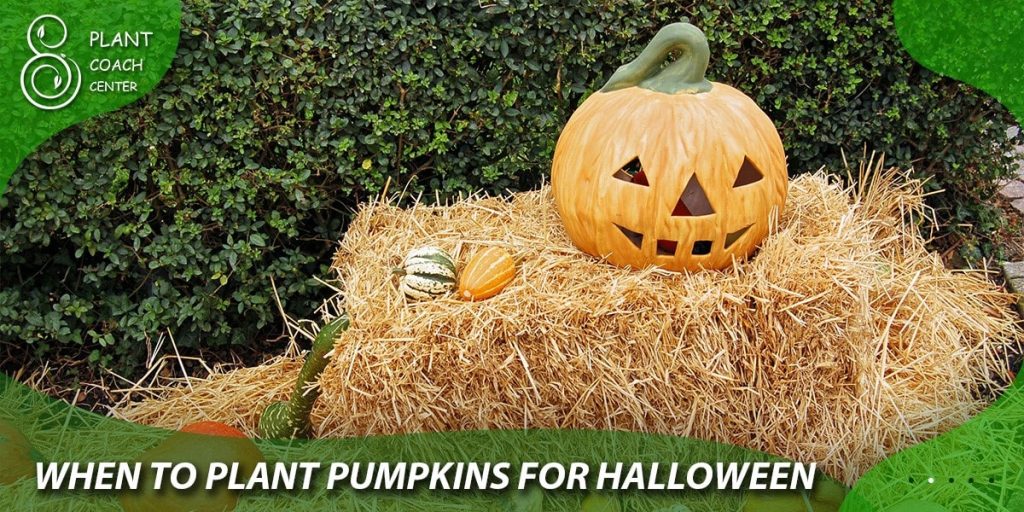
Ripening
As the days grow shorter and the air crisper, your pumpkins transition to their final act. The deep green skin shifts to the iconic orange hue, signaling their readiness for harvest. Monitor the color change and tap the pumpkins—mature ones emit a hollow sound.
Choosing the Right Pumpkin Variety: A Trick-or-Treater’s Guide
When it comes to growing pumpkins for Halloween, the variety you select sets the stage for the kind of celebration you’ll have. Each pumpkin type boasts its own unique characteristics, making the process of choosing the perfect one an exciting adventure in itself.
Jack-O’-Lantern Pumpkins
These are the classic go-to pumpkins for carving spooky faces and designs. Their round shape, sturdy walls, and large size provide ample canvas for your artistic aspirations. Look for varieties like ‘Howden’ or ‘Cinderella’ for reliably perfect carving pumpkins.
Miniature Pumpkins
If you want variety in your Halloween decorations, consider growing miniature pumpkins. These charming little orbs come in various colors, from orange to white and even striped. Their diminutive size is perfect for tabletop displays or crafting projects with kids.
White Pumpkins
For a departure from the norm, white pumpkins bring an elegant touch to your Halloween decor. Their neutral hue offers a modern twist on traditional decorations. Varieties like ‘Lumina’ or ‘Baby Boo’ are ideal choices to infuse a touch of sophistication into your pumpkin patch.
Specialty Pumpkins
Get creative with specialty pumpkins that defy conventions. ‘Knucklehead’ pumpkins boast warts and bumps that add character to your arrangements, while ‘Blue Jarrahdale’ pumpkins sport a striking blue-gray hue that stands out in a sea of orange.
Dual-Purpose Pumpkins
Some varieties are not just for show but also delicious when cooked. ‘Sugar Pie’ pumpkins are prized for their sweet, smooth flesh, perfect for making pies, soups, and other culinary delights. Embrace the spirit of sustainability by choosing pumpkins that serve both decorative and culinary purposes.
Giant Pumpkins
If you want to make a grand statement, giant pumpkins might be your calling. These behemoths require careful nurturing and space, but the reward is an awe-inspiring centerpiece for your Halloween festivities.
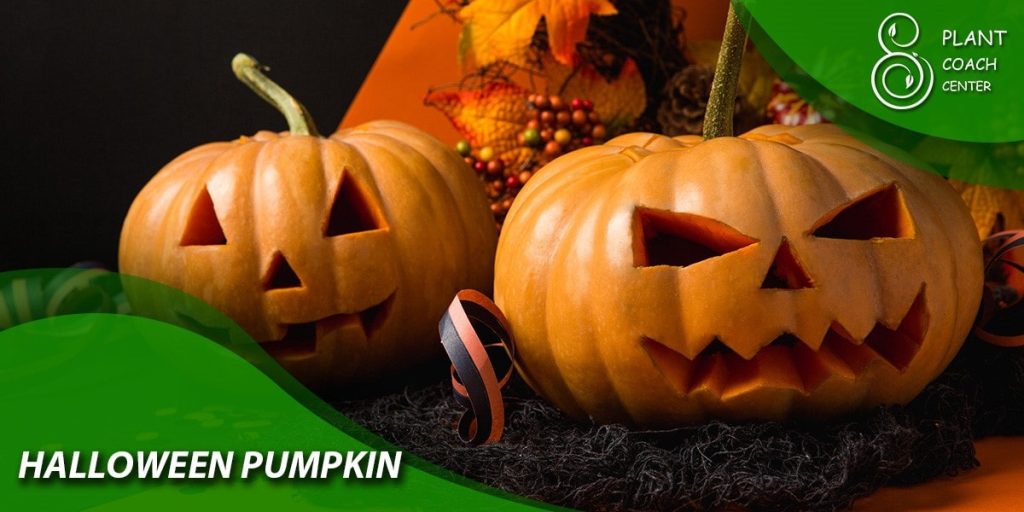
Seeds or Seedlings: Weighing Your Planting Options
As you embark on your pumpkin-growing journey, a fundamental decision awaits: should you start from seeds or opt for young seedlings? Each approach has advantages and considerations, catering to different experiences and preferences.
Starting from Seeds
Advantages:
Cost-effectiveness: Seeds are generally more affordable than buying established seedlings.
Variety choice: When growing from seeds, you have a more comprehensive selection of pumpkin varieties.
Satisfaction: Witnessing the entire growth process, from germination to harvest, can be incredibly rewarding and educational.
Considerations:
Time: Growing from seeds requires patience, as germination and early growth stages take time.
Indoor space: You’ll need indoor space and proper conditions for seed starting, especially in regions with shorter growing seasons.
Care: Seedlings demand careful attention to ensure they thrive during the delicate early stages.
Transplanting Seedlings
Advantages:
Time-saving: Seedlings are already started, allowing you to skip the initial germination and early growth stages.
Risk reduction: Transplanted seedlings tend to be hardier and less susceptible to early setbacks.
Extended growing season: With a head start, your seedlings may mature earlier, which is especially beneficial in shorter growing seasons.
Considerations:
Cost: Purchasing seedlings can be more expensive than starting from seeds.
Availability: The selection of pumpkin varieties might be limited to what’s available as seedlings.
Transplant shock: Transferring seedlings to the garden can cause stress, requiring proper care and acclimatization.
Choosing seeds and seedlings ultimately depends on your gardening experience, available time, and growing conditions. Beginners might find it simpler to start with seedlings, while experienced gardeners and those eager for a hands-on experience enjoy growing from seeds.
Whichever path you choose, nurturing your pumpkins with care and attention will lead to a bountiful Halloween harvest.
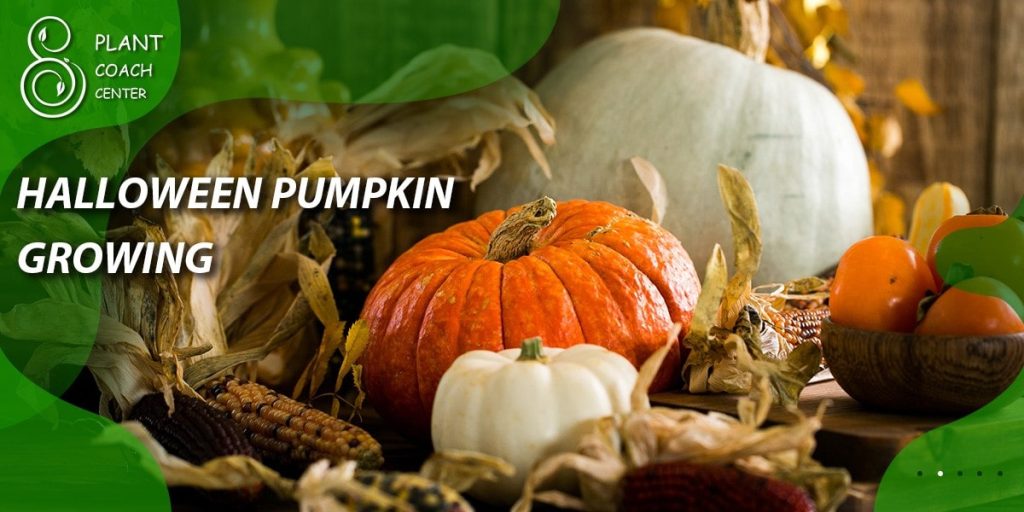
Extending the Halloween Harvest: Staggered Planting for Prolonged Fun
Why limit the Halloween fun to just one night when you can extend the excitement by staggering your pumpkin planting? Embracing the concept of staggered planting allows you to enjoy a prolonged harvest period, ensuring a steady supply of pumpkins throughout the entire spooky season.
The Strategy Behind Staggered Planting
Staggered planting involves intentionally sowing pumpkin seeds or transplanting seedlings at different times, creating a sequence of maturity stages. This means that only some of your pumpkins will be ready at once, but instead, they’ll ripen gradually, offering a continuous stream of festive delights.
The Benefits of Staggered Planting
Prolonged Decorations: You can decorate your home and garden with fresh pumpkins throughout October by planting pumpkins with varying maturity dates. As early ones are carved or displayed, later ones are ready to take their place.
Flexible Harvesting: Staggered planting ensures you can simultaneously handle a surplus of ripe pumpkins. This flexibility lets you harvest as needed, preventing wastage.
Extended Joy: Watching pumpkins evolve from tiny sprouts to fully grown fruit is a source of joy. With staggered planting, you can relish this experience over an extended period.
Implementing Staggered Planting
Selecting Varieties: Choose pumpkin varieties with varying maturity periods. Some pumpkins mature in as little as 80 days, while others might take over 120 days.
Sequential Planting: Start by planting a batch of pumpkins based on the average frost-free date for your region. Then, at two to three-week intervals, grow additional collections. This will ensure a continuous supply.
Record-Keeping: Maintain a planting calendar to track the dates of each planting batch. Note the variety and the expected days to maturity for reference.
Adjusting Based on Climate: If you live in an area with a shorter growing season, you might need to start planting earlier to accommodate certain varieties’ more extended maturation periods.
The Harvest Festival That Keeps on Giving
Staggered planting adds an element of excitement to your gardening endeavors. It’s like hosting your very own harvest festival that spans weeks, with each pumpkin reaching its peak just in time for Halloween celebrations.
So, whether you’re aiming for a grand pumpkin display or planning a series of carving parties, staggered planting ensures your Halloween season is filled with a delightful array of pumpkins at various stages of their enchanting journey.
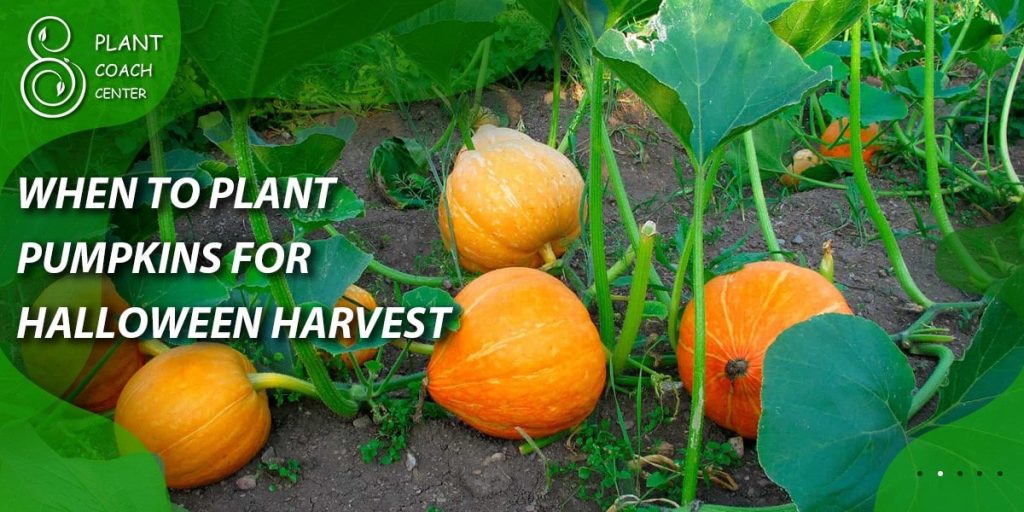
Conclusion
As the crisp air of autumn envelops us and the spirit of Halloween beckons, venturing into the world of pumpkin growing becomes a journey brimming with anticipation and wonder. From mastering the art of timing to understanding the intricate phases of pumpkin growth, our guide has illuminated the path to cultivating your Halloween treasures.
Whether you opt for the classic jack-o’-lanterns, the elegant allure of white pumpkins, or the whimsy of miniatures, your choices shape a pumpkin patch that reflects your festive dreams. Embrace the thrill of selecting between seeds and seedlings, and consider the magic of staggered planting to extend the Halloween harvest beyond a single night.
At plantcouchcenter.com, we invite you to explore even more gardening insights and embark on many plant-related adventures. So, as the leaves rustle and the pumpkin vines sprawl, may your journey to grow the perfect Halloween pumpkins be filled with joy, learning, and the enchantment that this season brings. Happy growing and haunting!
When is the best time to plant pumpkins for Halloween?
Aim to plant pumpkins around late spring to early summer, about 90-100 days before Halloween night.
Can I start pumpkins from seeds indoors?
Absolutely! Starting pumpkin seeds indoors a few weeks before the last frost can give your plants a head start.
What's the benefit of staggered planting for pumpkins?
Staggered planting ensures a continuous pumpkin harvest, providing decorations and carving delights throughout Halloween.


